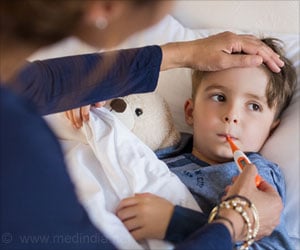Frequent infections in early childhood can shape future health, increasing the risk of severe diseases and more antibiotic use. Proactive care is key.
- Frequent infections in the first few years can affect a child’s health and greater antibiotic use later in childhood
- Children who experienced more than 16 infections by age three were at higher risk of moderate to severe infections
- Children who are prone to frequent early infection can benefit from closer medical monitoring to prevent complications and future health risks
Burden of Infections in Early Life and Risk of Infections and Systemic Antibiotics Use in Childhood
Go to source). The researcher analyzed data from the Copenhagen Prospective Studies on Asthma in Childhood cohort, which followed 614 children from birth to 10 or 13 years. The study examined detailed health diaries kept by parents during the child’s first three years, recording common infections like colds, pneumonia, ear infections, gastroenteritis, and fever. The goal was to understand if early infection rates predict future health problems.
Children with over 16 infections by age 3 face a higher risk of serious infections later. Hygiene & timely vaccinations are vital! #parentingtips #healthykids #vaccination #medindia’
How Early Infections Shape a Child's Future Health
Children who experienced more than 16 infections by age three were at higher risk of moderate to severe infections later in childhood and needed more frequent antibiotic treatments.Certain diseases such as pneumonia, ear infections and colds were particularly associated with these risks. Early exposure to rhinoviruses and enteroviruses increased the likelihood of later pneumonia while respiratory syncytial virus (RSV) showed no significant effect.
Recognizing these patterns enables parents and doctors to proactively manage childhood health. Children who are prone to frequent early infection can benefit from closer medical monitoring to prevent complications and future health risks.
Proactive strategies such as improved hygiene and timely vaccinations can reduce infection rates and long-term effects.
Improving Hygiene and Air Quality at Home
Improving Air Quality
- Make sure the air in the room is fresh by opening windows when possible. Even just opening them a little can help improve the air quality. Use fans to increase airflow if needed.
- Consider using portable air purifiers, especially in bedrooms or living areas.
- Take activities outside whenever possible to improve ventilation and reduce the concentration of indoor germs.
Cleaning, Sanitizing, and Disinfecting
- Frequently clean the touched surfaces such as doorknobs, light switches, kitchen counters, and remote controls regularly.
- Immediately clean surfaces that have been exposed to blood, bodily fluids, or dirt with gloves and appropriate disinfectants.
- Frequently used toys and objects must be sanitized to prevent infections.
Handwashing
- Wash hands with soap and water, especially before eating, after using the bathroom, or after coughing or sneezing.
- Ensure soap, water, and paper towels are easily accessible in bathrooms and kitchens.
- If soap and water are unavailable, use hand sanitizer with at least 60% alcohol. Keep it out of reach of young children, and supervise use for children under 6 years old.
Respiratory Etiquette
- Encourage children to cover their mouth and nose with a tissue when coughing or sneezing. Properly dispose the used tissue and wash your hands immediately afterwards.
- Use the Elbow: If a tissue is unavailable, remind children to sneeze or cough into their elbow to prevent the spread of germs.
Reference:
- Burden of Infections in Early Life and Risk of Infections and Systemic Antibiotics Use in Childhood - (https://jamanetwork.com/journals/jamanetworkopen/fullarticle/2828688)
Source-Medindia










